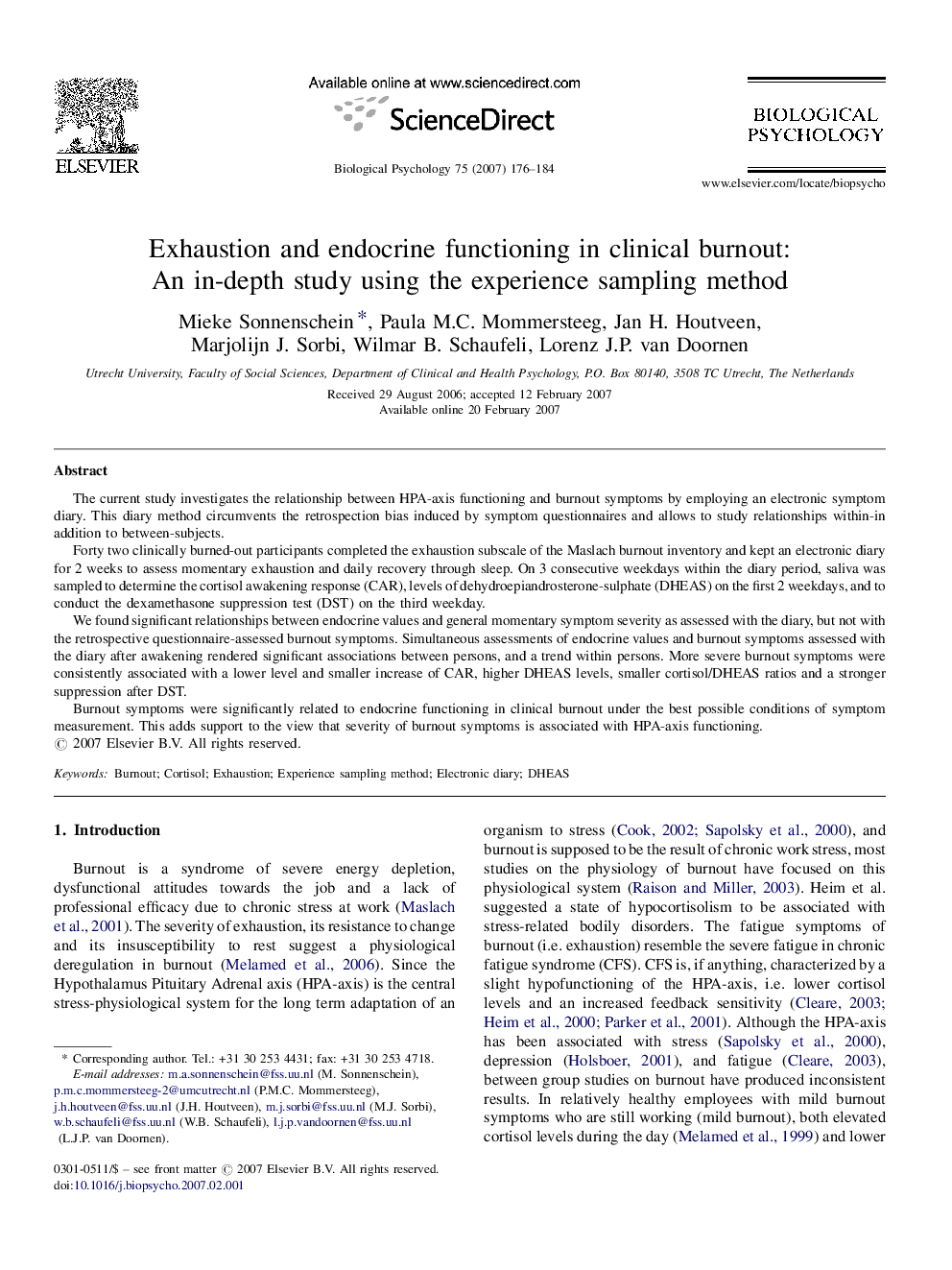| Article ID | Journal | Published Year | Pages | File Type |
|---|---|---|---|---|
| 921568 | Biological Psychology | 2007 | 9 Pages |
The current study investigates the relationship between HPA-axis functioning and burnout symptoms by employing an electronic symptom diary. This diary method circumvents the retrospection bias induced by symptom questionnaires and allows to study relationships within-in addition to between-subjects.Forty two clinically burned-out participants completed the exhaustion subscale of the Maslach burnout inventory and kept an electronic diary for 2 weeks to assess momentary exhaustion and daily recovery through sleep. On 3 consecutive weekdays within the diary period, saliva was sampled to determine the cortisol awakening response (CAR), levels of dehydroepiandrosterone-sulphate (DHEAS) on the first 2 weekdays, and to conduct the dexamethasone suppression test (DST) on the third weekday.We found significant relationships between endocrine values and general momentary symptom severity as assessed with the diary, but not with the retrospective questionnaire-assessed burnout symptoms. Simultaneous assessments of endocrine values and burnout symptoms assessed with the diary after awakening rendered significant associations between persons, and a trend within persons. More severe burnout symptoms were consistently associated with a lower level and smaller increase of CAR, higher DHEAS levels, smaller cortisol/DHEAS ratios and a stronger suppression after DST.Burnout symptoms were significantly related to endocrine functioning in clinical burnout under the best possible conditions of symptom measurement. This adds support to the view that severity of burnout symptoms is associated with HPA-axis functioning.
